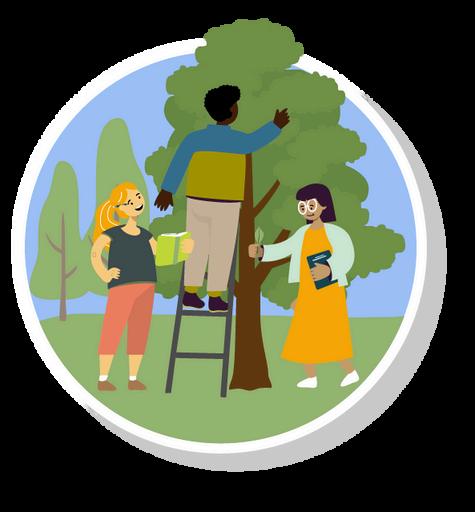
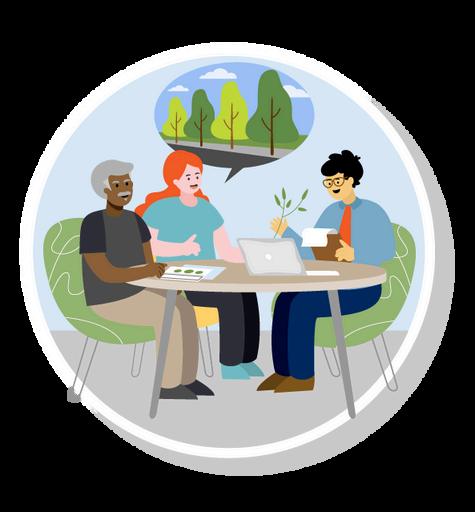
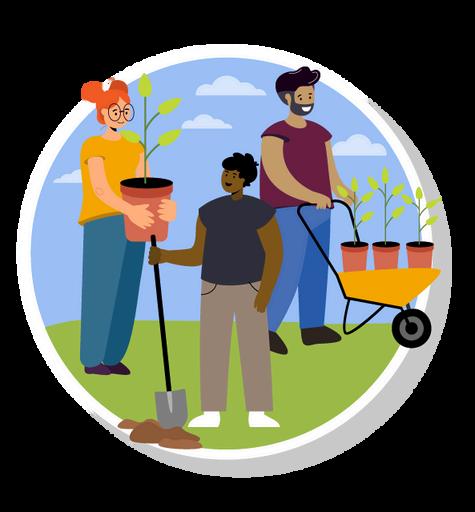
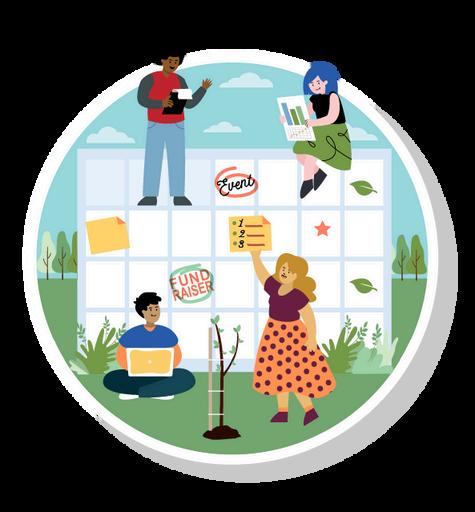
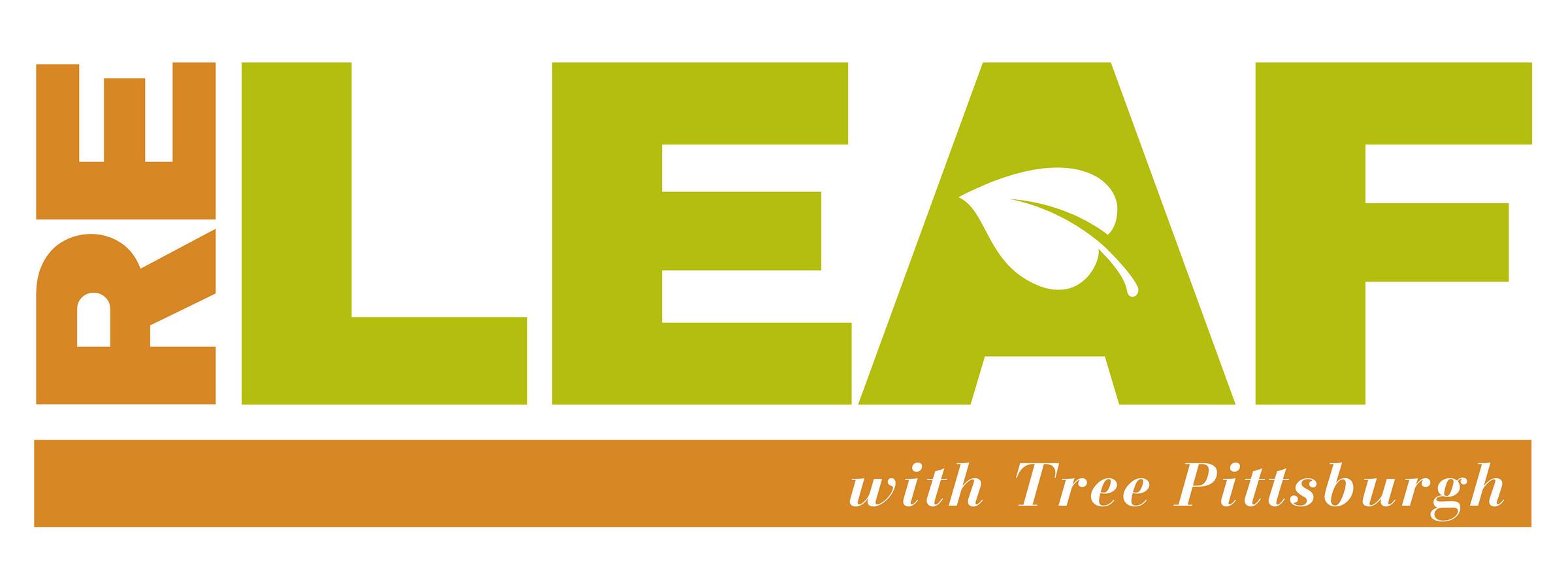
Plan for Healthier and Greener Community Trees in Homewood
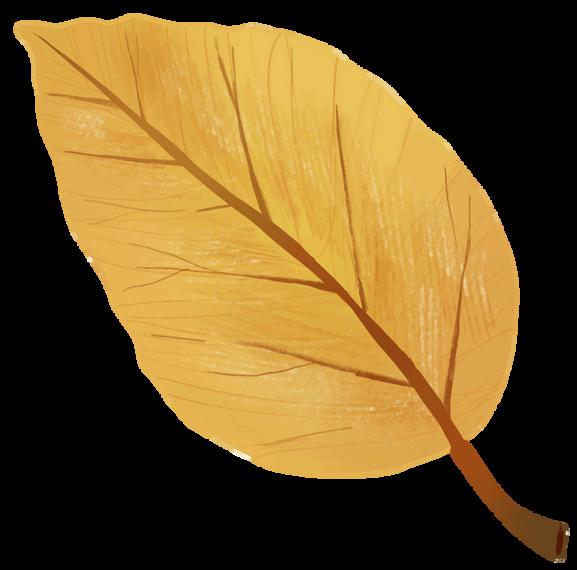
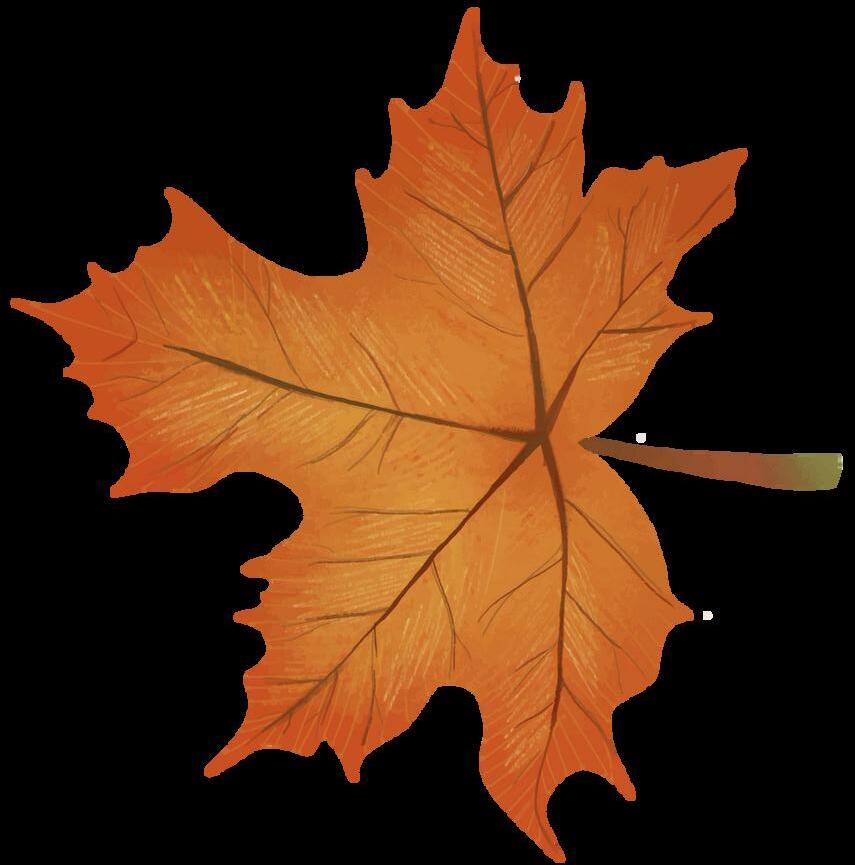

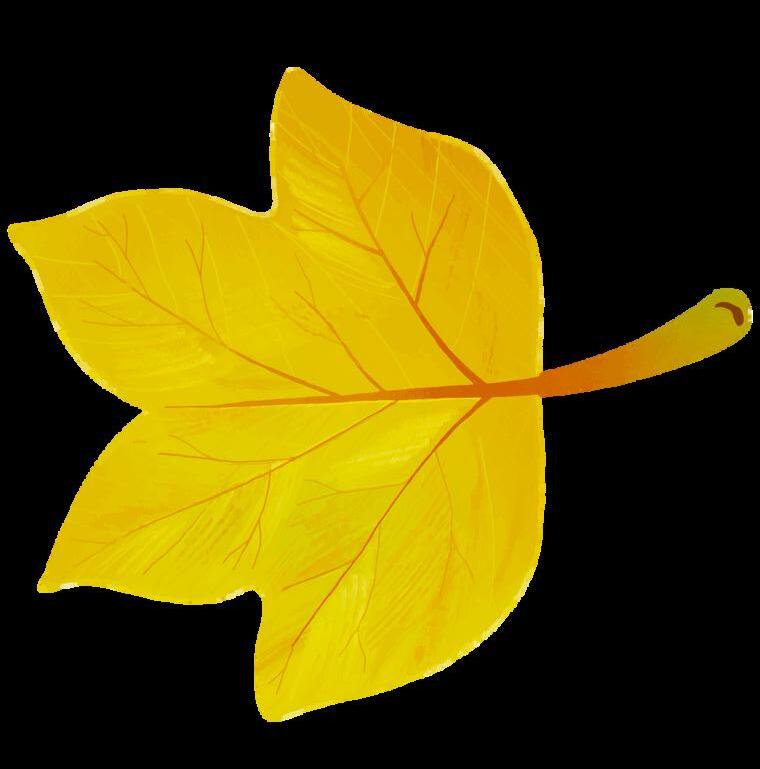

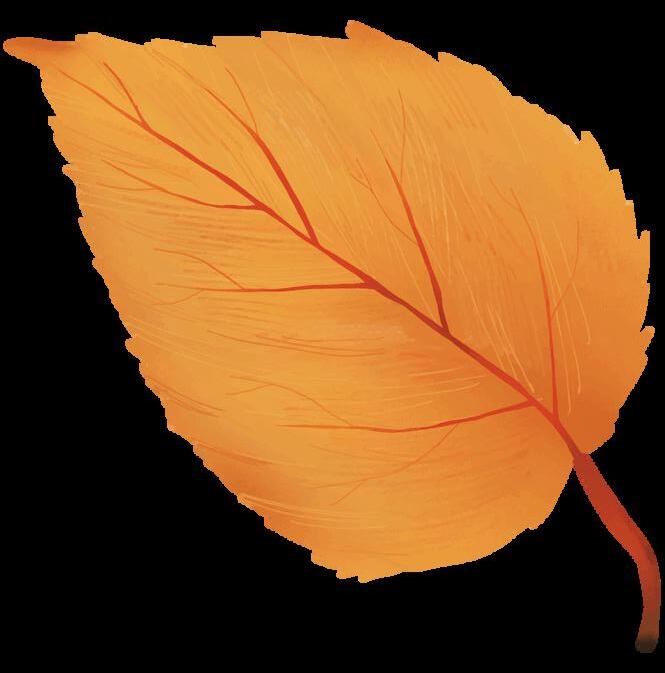



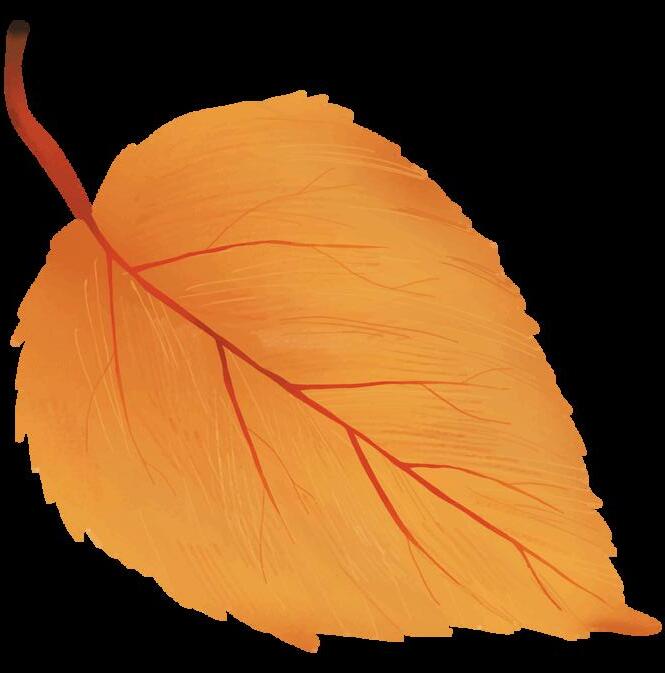
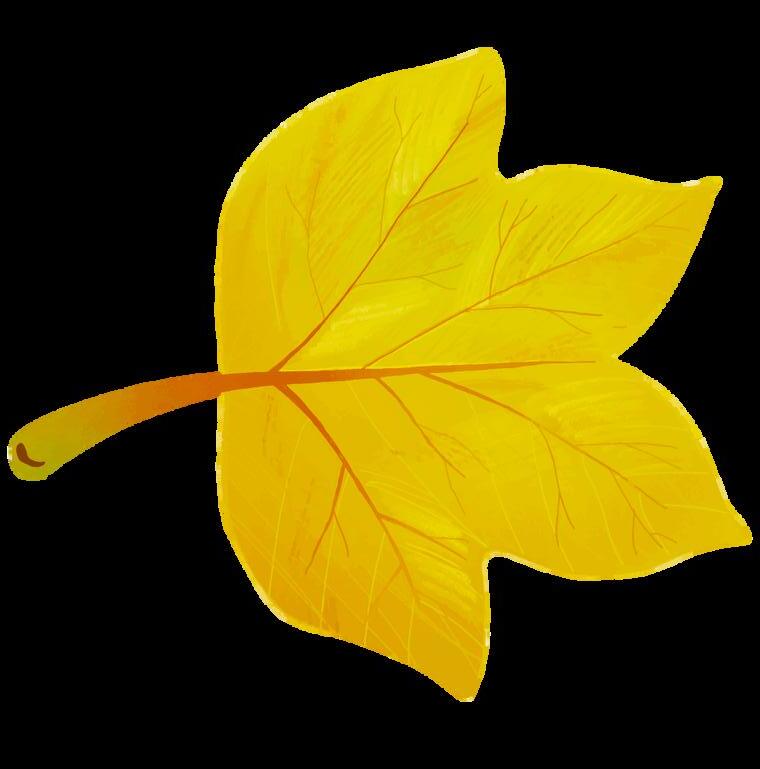
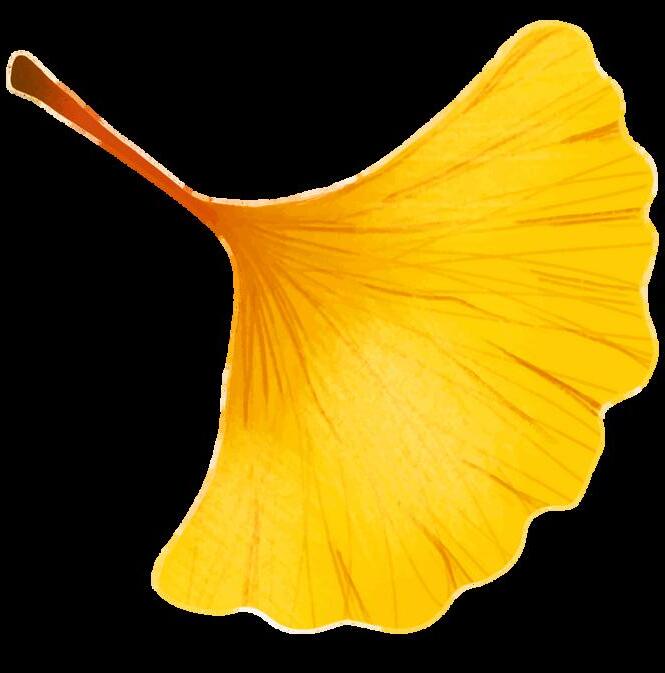
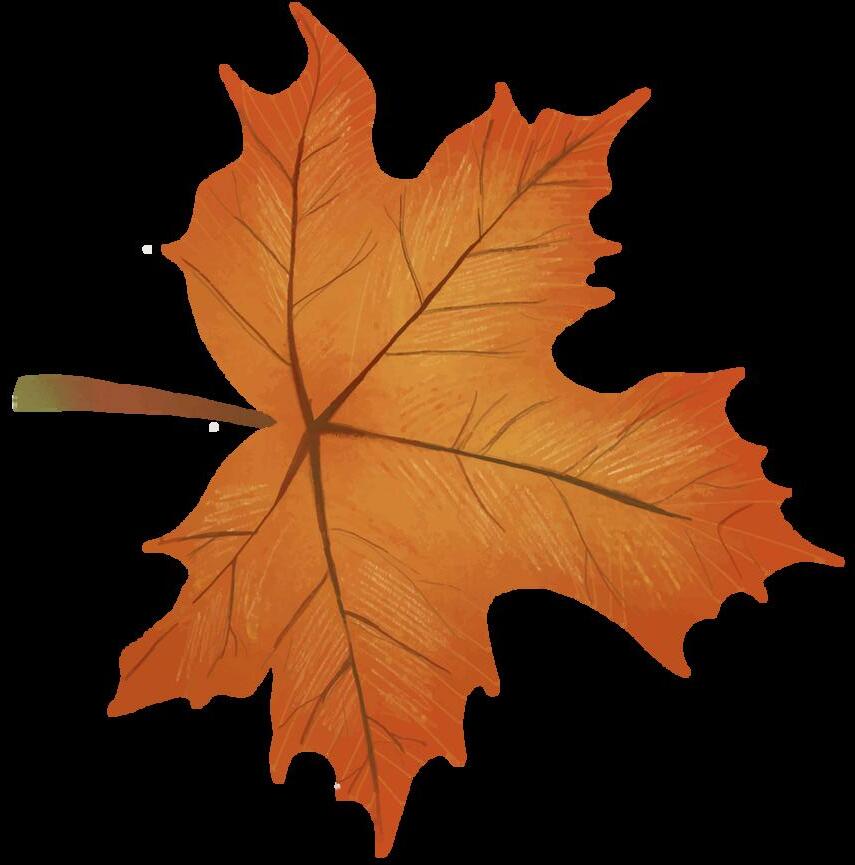




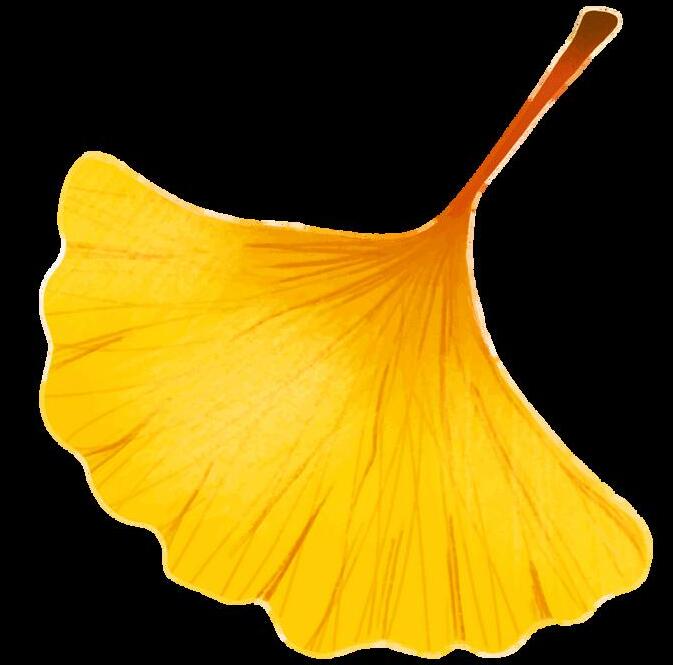
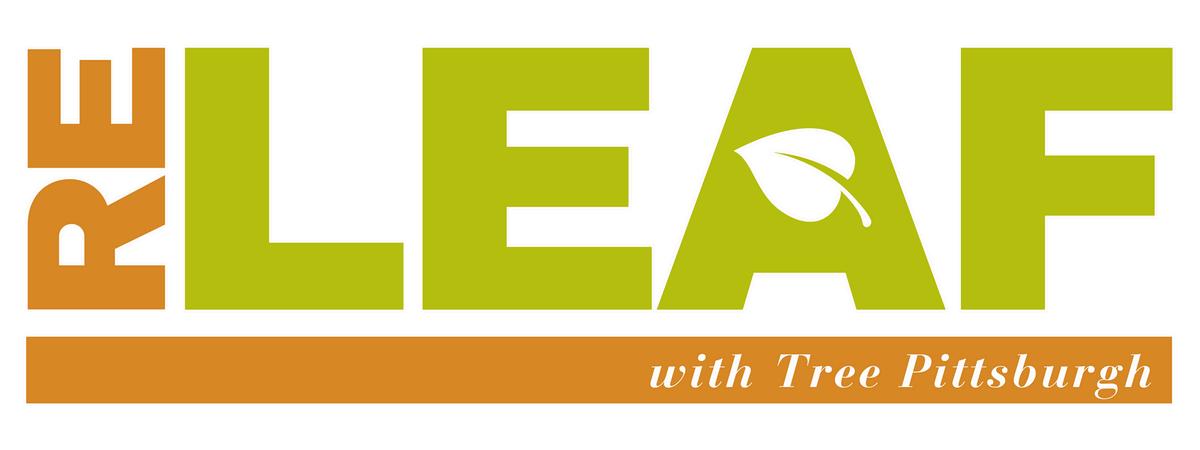





























Tree Pittsburgh extends its heartfelt gratitude to everyone who participated in the ReLeaf Homewood planning process. From the dedicated steering committee to the enthusiastic volunteers and residents who generously shared their insights through surveys or participated in implementation projects, your contributions have been instrumental in shaping a vision for a greener and healthier Homewood
We would also like to thank our partners from the City of Pittsburgh, Western Pennsylvania Conservancy, Resilient Cities Catalyst, Operation Better Block and Junior Green Corps, Pittsburgh Parks Conservancy, and many more Thank you for all your contributions and time in this planning process!
This plan was made possible through a generous grant from the Hillman Foundation.
Lisa Coeffe | City Forester, City of Pittsburgh
Michael Kelley | Utility Coordination Arborist
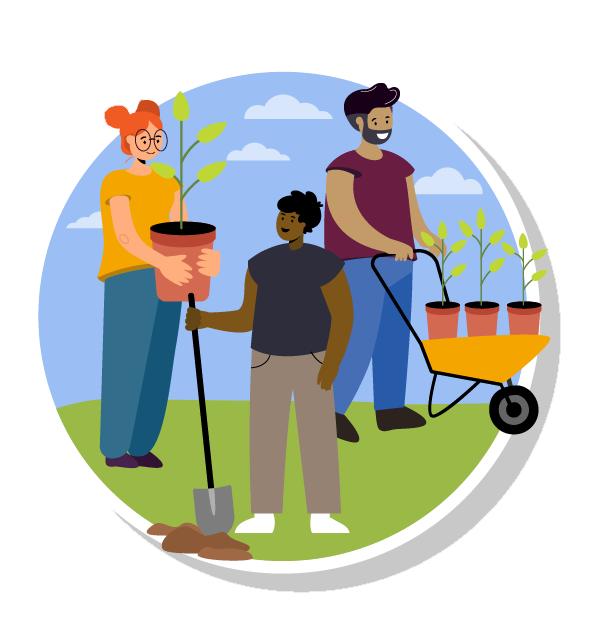
Carlos Thomas | Operation Better Block
Cherry Smith | Homewood Resident
Khadija Harris | Homewood Resident
Leslie Centola | Upstream
Michelle Chestnut | Homewood Resident
NaTisha Washington | The Breathe Project
Raqueeb Bey | Black Urban Gardeners, Homewood Resident
Ruth Walker | Alpha Kappa Alpha Sorority LLC
Tanya Todd | Homewood Resident
Zinna Scott | Operation Better Block Board President
Adriana Bowman | Senior Planner (Strategic Planning)
Clara Kitongo | Tree Equity Manager
Danielle Crumrine | Executive Director
Kelsey Munsick | Volunteer Manager
Nsai Temko | ACC AmeriCorps Member
Surya Lee | Community Outreach Coordinator

A key recommendation in the 2012 City of Pittsburgh Urban Forest Master Plan is to increase tree canopy in lower-canopy neighborhoods by connecting and engaging the community.
In 2014, Tree Pittsburgh worked with two neighborhoods (Manchester/Chateau and Lawrenceville) to expand programming and create a community plan specific to the neighborhoods’ needs and visions. Creating a neighborhood-level community forestry plan allows residents and other partners to address challenges and opportunities in tree canopy distribution at the local level
In 2022, Tree Pittsburgh, local partners, and community leaders launched the ReLeaf Homewood planning process with funding from the Hillman F
The ReLeaf Homewood plan aims to improve residents' quality of life by providing a roadmap with a priority list of projects to increase the neighborhood's tree canopy and resident participation in tree care and educational activities The plan calls for various action items to restore and protect Homewood’s community trees, with youth engagement as a fundamental anchoring point for consideration during future project implementation in the neighborhood It also presents a roadmap for increasing tree canopy coverage closer to the average tree canopy coverage experienced throughout Pittsburgh



Homewood is located in the eastern section of the City of Pittsburgh Some of Pittsburgh’s wealthiest residents, including Andrew Carnegie and George Westinghouse, lived in Homewood in the 1800s. Homewood’s earliest African American residents were employed by these wealthy households and resided in the area The neighborhood comprised a diverse community of Irish, Italian, German, and upper-middle-class African Americans in the early twentieth century Many famous African Americans also lived in Homewood, including Teenie Harris, Billy Strayhorn, and Errol Garner In the 1950s, the displacement of numerous African Americans from the Hill District after the construction of the Civic Arena near Downtown Pittsburgh caused an influx of new Black residents to the community This increased the community’s Black population from 22 percent in 1950 to 66 percent in 1960 During this period, African-American-owned businesses also thrived on Frankstown Avenue and the community developed as one of the most important Black communities in Western Pennsylvania. The overall population of the community has declined significantly from a high of more than 34,000 to around 6,500 people today due to various factors of disinvestment. A further decline in the population occurred due to the “White Flight” phenomenon when white residents fled Homewood and other innercity neighborhoods for the suburbs
In 1968, the Fair Housing Act of the Civil Rights Act was passed, which caused wealthier families to leave the community.
During this same period, African-Americanowned businesses also thrived on Frankstown Avenue, and the community became one of the most important Black communities in Western Pennsylvania The overall population has declined significantly from a high of more than 34,000 to around 5,500¹ people in 2020 due to various factors of disinvestment.²
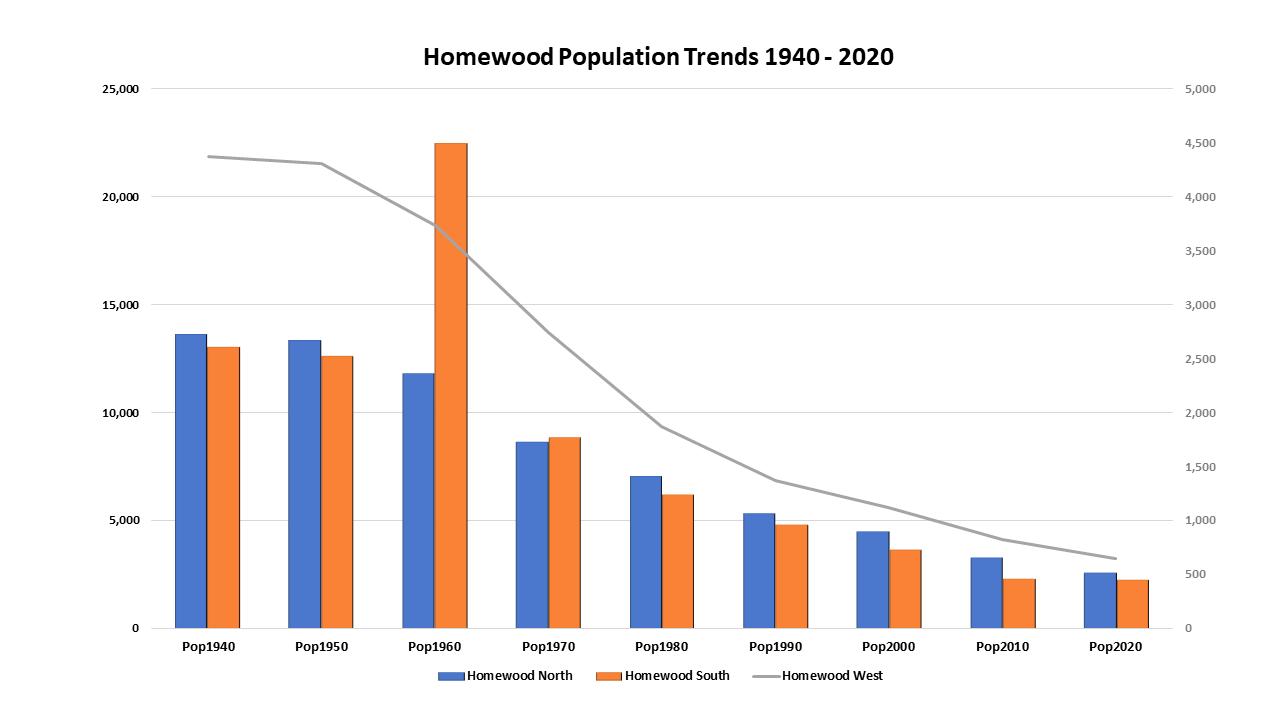
Homewood comprises three Pittsburgh neighborhoods: Homewood North, Homewood South, and Homewood West. The 2010 US Census found that each neigbhorhood’s population was over 95 percent Black or African American Homewood West had the lowest population, with 818 residents (shown by the grey trend line and the scale on the right of the graph), followed by Homewood South, 2,344 people, and 3,280 residents in Homewood North. The neighborhood’s population has generally declined since a peak in the 1960s The graph shows population density trends in Homewood from the 1940s into
2020 We can observe a steady decline in the population, with Homewood South having a peak population in the 1960s
¹ US Census Bureau, Western PA Regional Data Center, https://data.wprdc.org/dataset/2020-census-redistricting-data-extracts/resource/a8414ed5c50f-417e-bb67-82b734660da6?inner span=True, last viewed 4/19/24
² Homewood
The East Busway runs through the neighborhood and features a bus station in Homewood South. About 50 percent of the population across each neighborhood is below 18 or over 65 These populations can be most vulnerable to air quality issues exacerbated by infrastructure such as the busway and low tree canopy cover to capture pollutants
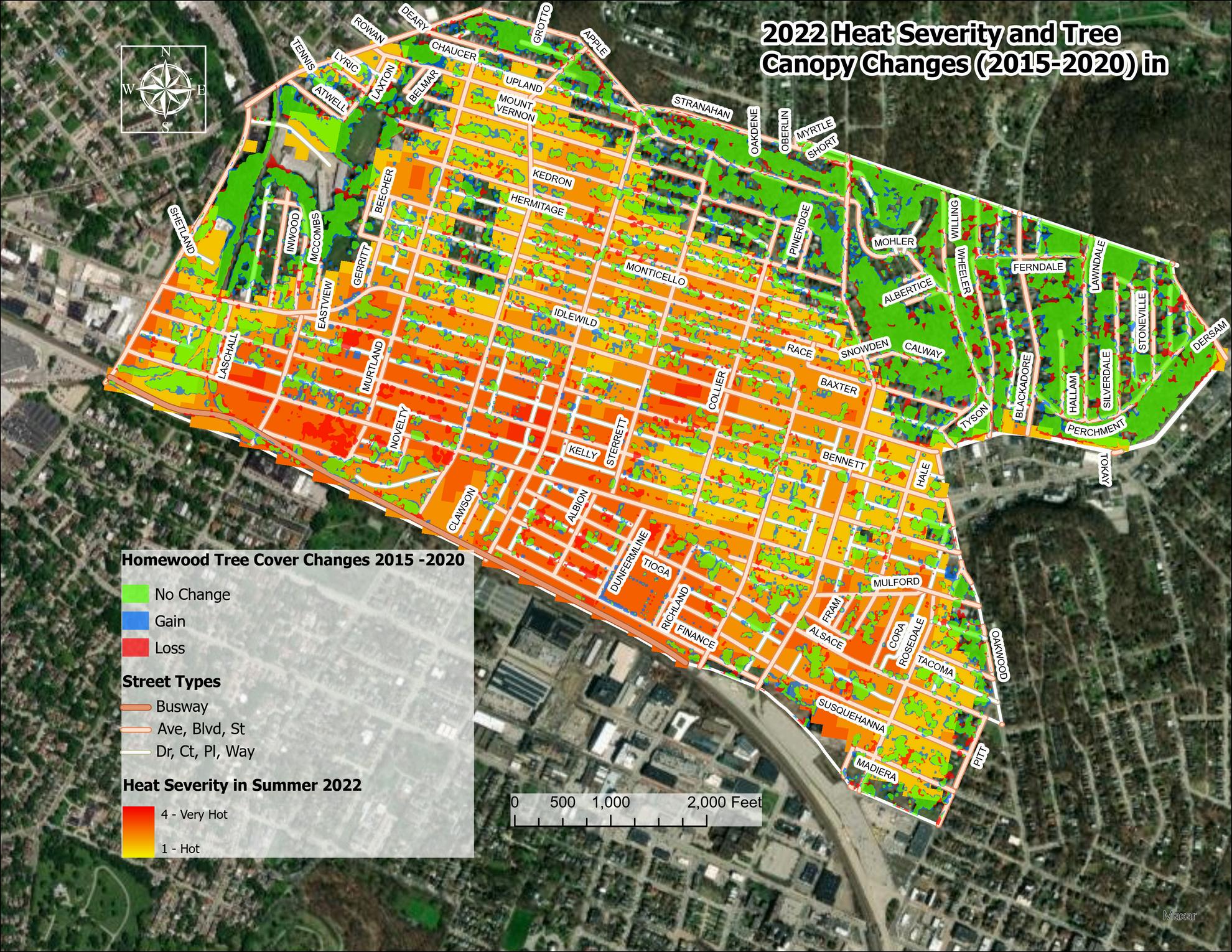
Additionally, reports of basement flooding have been associated with community areas with large impervious surfaces and fewer trees. An additional environmental factor facing the neighborhood is the Urban Heat Island Effect The Heat Severity map on the right-hand side of this page depicts the heat spread throughout the neighborhood in the summer of 2023 Residents living in Homewood South and Homewood West experience the highest impacts of heat during the summer, as seen from the high indices shown on the map.
The Homewood Plan also makes the case for deeper tree work in Homewood. It highlights different sustainability priorities as identified by residents including but not limited to: air pollution mitigation via tree planting, addition of more green spaces, installation of green infrastructure and stormwater capture
The Pittsburgh Shade Tree Commission’s Equitable Street Tree Investment Strategy identified low-income and low-canopy neighborhoods in Pittsburgh. This strategy aimed to increase tree canopy coverage in these neighborhoods and ensure that the tree coverage is equitably distributed throughout the city ³ That same strategy identified key action steps once neighborhoods were identified for participation, including but not limited to:
Conducting tree maintenance
Developing campaigns to increase community support for tree planting
Coordinating tree planting plans with ForgingPGH and neighborhood planning efforts
Increasing tree plantings
Homewood was one of the first ten neighborhoods selected by the Shade Tree Commission for Phase I implementation because of current trends in tree canopy cover and other environmental challenges also mentioned This plan aims to build upon the action steps in the investment strategy and provide a roadmap for future greening efforts in Homewood It will also respond to asks from the Homewood Comprehensive Plan released in 2020.
³ Pittsburgh Shade Tree Commission, Equitable Street Tree Investment Strategy, 2021
The Steering Committee for this planning process includes key partners from the community and a select group of community residents interested in mapping out a future for the neighborhood We would like to thank the following folks from the community for their support and engagement:
Carlos Thomas
Cherry Smith
Khadija Harris
Michelle Chestnut
NaTisha Washington
Raqueeb Bey
Ruth Walker
Tanya Todd
Zinna Scott
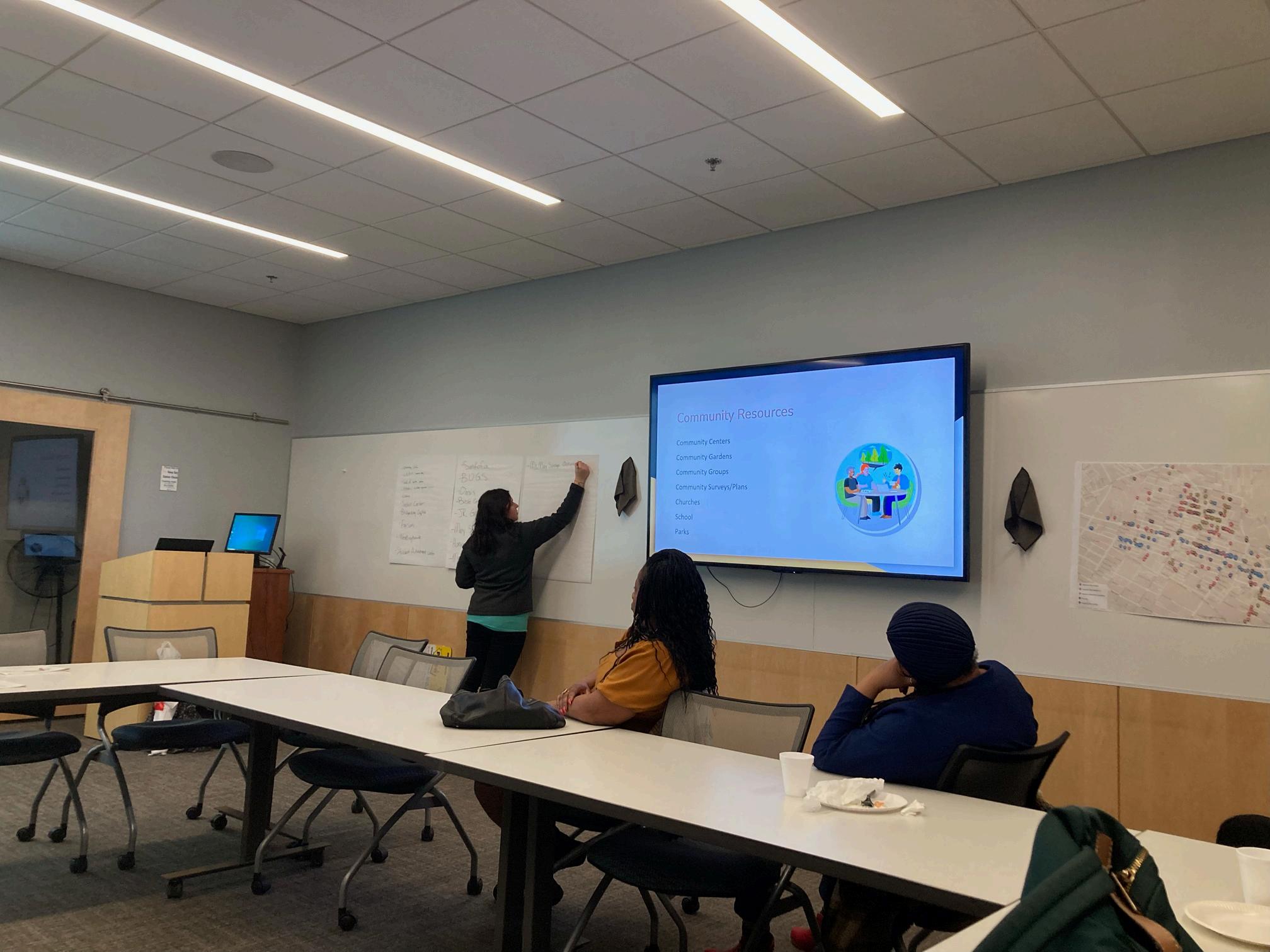
Steering Committee meetings were also held quarterly throughout the ReLeaf planning process Here, we met to discuss critical issues to address within the plan Together, we planned and supported different events, including:
Community Clean-up Day with the Operation Better Block
Tree Tender training for residents for Junior Green Corps youth
Tree care events, including pruning and mulching days
Tree Adoptions in 2023 and 2024
Tree planting events in 2024
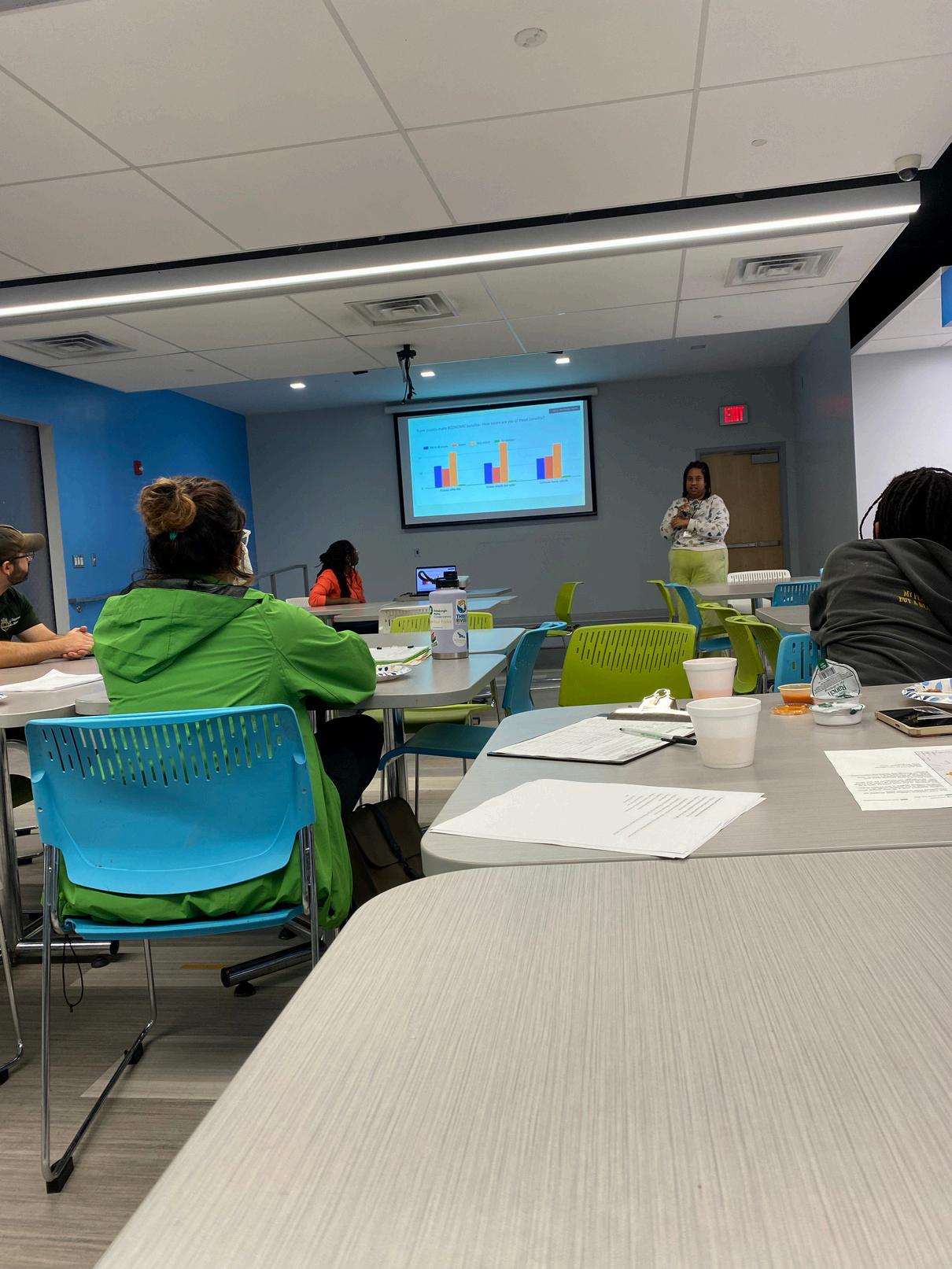

The development of a ReLeaf plan includes examining the community forest through the lens of these four questions:
Through survey collection by door-knocking and sending mailers to residents, attending community events, tree plantings, tree care activities, and tree adoption events, our team works to understand the community forest’s current condition and the attitudes of community members surrounding trees.
and
include but are
limited to:
Engage with the community throughout the planning process by offering tree adoptions, tree planting, and tree care events in the neighborhood.
Conduct tree site assessments with community residents, City Foresters, and Certified Arborists from Western Pennsylvania Conservancy and Tree Pittsburgh to identify potential tree locations in the neighborhood
The average tree canopy coverage in Pittsburgh is 40 percent, and a community is considered to have equitable access if it has at least 30 percent canopy coverage within a single neighborhood.
Homewood’s neighborhoods saw an increase in tree canopy from 2015 to 2020 Homewood North has the highest percentage of tree canopy, at 44.05 percent Homewood West has the secondhighest canopy coverage, at 31 24 percent Homewood South has the least canopy coverage, at 18 58 percent While each neighborhood saw an increase in tree canopy, canopy loss is almost equal, meaning the canopy cover in each neighborhood grew less than one percent
Observing the tree canopy coverage changes on the map, we notice large canopy losses in South Homewood due to construction and lot improvement projects.

For example, at the intersection of Susquehanna and Murtland St, a recently redesigned lot with a large loss of tree cover shows a large loss of canopy In addition, the new houses built on the 7000 Block of Kelly St in Homewood also led to a loss of significant tree canopy coverage in South Homewood
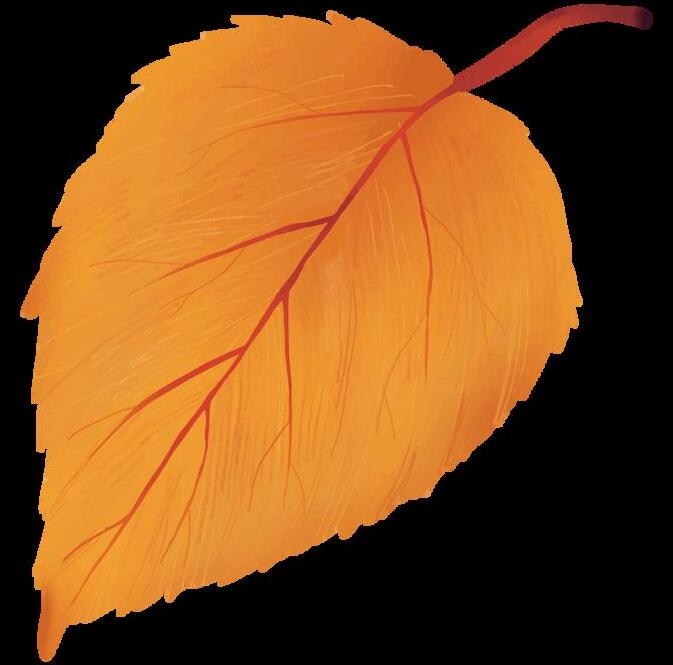

According to a street tree inventory by the City of Pittsburgh, Homewood South has the most street trees, with 268 trees planted. Homewood North has the second most street trees, with 238 street trees, and Homewood West is home to 57 street trees Most of the trees inventoried in each neighborhood were in fair or good condition The inventory also identified locations where street trees could be planted In partnership with Western Pennsylvania Conservancy, Operation Better Block has used TreeVitalize⁵ to plant trees throughout Homewood. These efforts have succeeded in Homewood South, where there has been at least one planting per year since 2018. Additionally, one TreeVitalize planting occurred in Homewood North in 2012, and no registered plantings in Homewood West
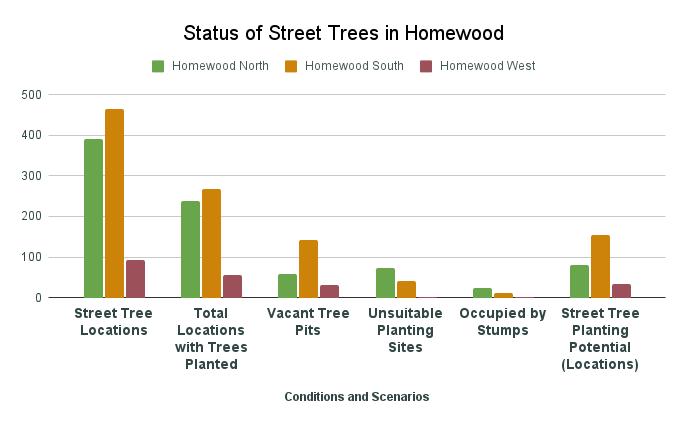
⁵ Western PA Conservancy, TreeVitalize Pittsburgh Partnership Description, https://waterlandlife
In the 2010 tree inventory, Homewood North had 391 street tree locations, 238 of which contained live trees, 58 had no trees planted in them, 72 were unsuitable for planting, and tree stumps occupied 23 A proactive campaign to replant and identify areas that were not recorded will be needed to get a more accurate read of the community forest potential. Only two of the 28 species inventoried exceed the 10 percent biodiversity threshold (maple and linden).
Regarding tree conditions, 21 percent of the trees are either in poor condition, critical, or dead, while 79 percent are in good or fair condition
Homewood South has 465 street tree planting locations, with 268 planted, 143 vacant, 42 unsuitable for planting, and 12 containing tree stumps. This presents an opportunity for a proactive campaign to replant and identify areas where trees have not been recorded (areas where sidewalks could be repaired and tree pits installed)
Only two of the 41 species inventoried exceed the 10 percent biodiversity threshold (sweetgum and Norway maple) In terms of tree conditions, 25 percent are in poor condition, critical or dead, 25 percent are in good condition, and 50 percent are in fair condition.
Homewood West has 94 inventoried street tree locations 57 locations contain live trees planted, 32 are vacant, two are unsuitable, and three contain tree stumps. A proactive campaign to replant and identify areas that were not recorded (areas where sidewalks could be repaired and tree pits installed) will help dramatically increase tree canopy in Homewood. Only two of the 20 species inventoried exceed the 10 percent biodiversity threshold (callery pear and Norway maple).
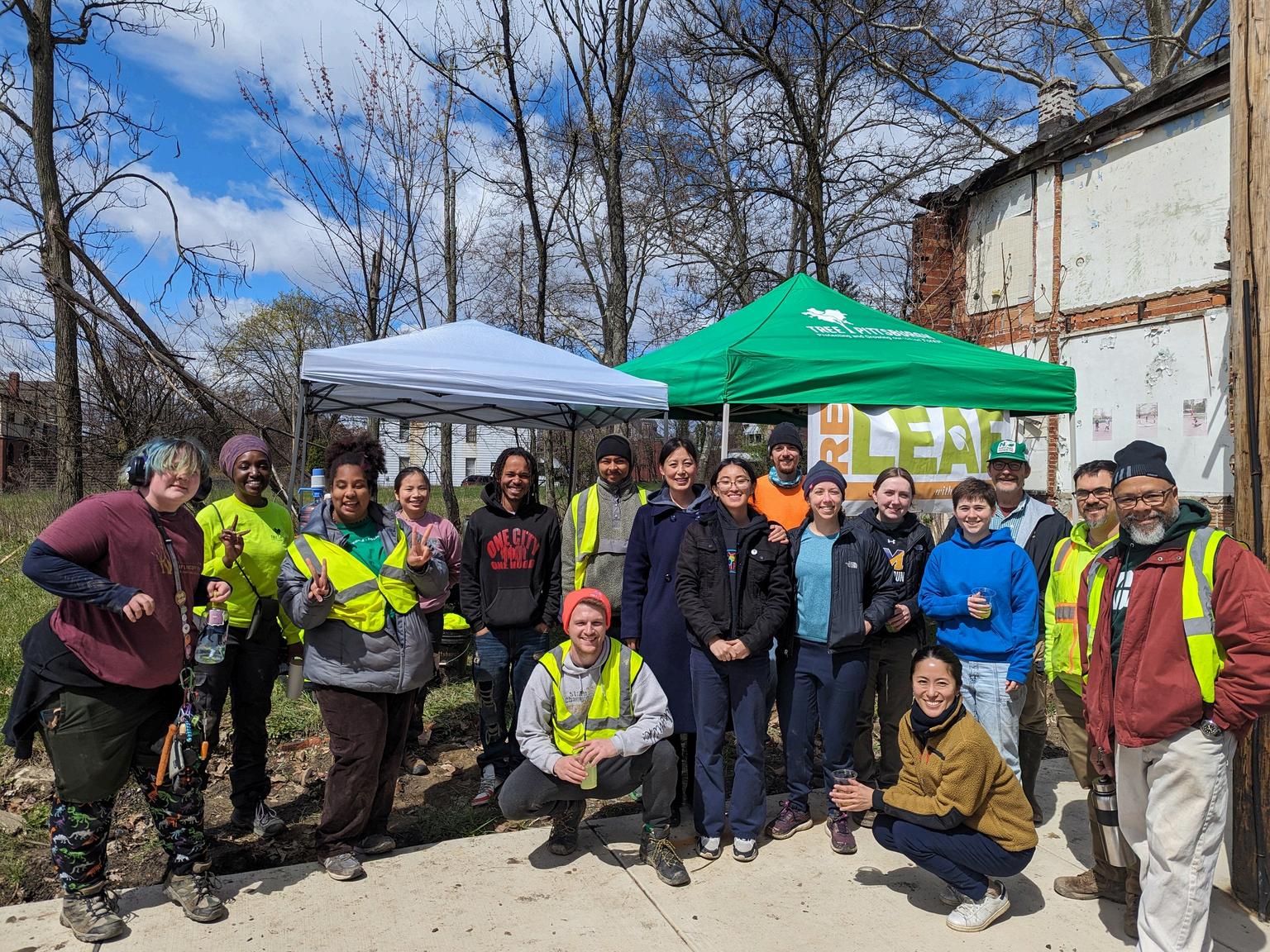
⁶ PA Department of Agriculture, Callery Pear Information https://prdagriculture pwpca pa gov/Plants Land Water/PlantIndustry/NIPPP/Pages/Callery-Pear aspx, last accessed 5/29/24
Tree Pittsburgh hosts Tree Adoptions for property owners, which allow them to get up to three trees at no cost, including tree protection This program invites folks to grow a tree on their private property, which will ultimately help grow Homewood's community forest. Homewood has hosted three adoptions starting in 2021. The community has been receptive to the program and could host additional tree adoptions for residents
Tree Tenders is a program that provides community members with tree planting and maintenance training It covers various topics, including tree care, planting, pruning, biology, pests, and diseases This knowledge better equips folks to interact with and care for the trees in their community. Before ReLeaf Homewood started, 13 registered Tree Tenders were in the Homewood area Additionally, Operation Better Block’s Junior Green Corp completes annual Tree Tender training with Tree Pittsburgh with the youth it serves.
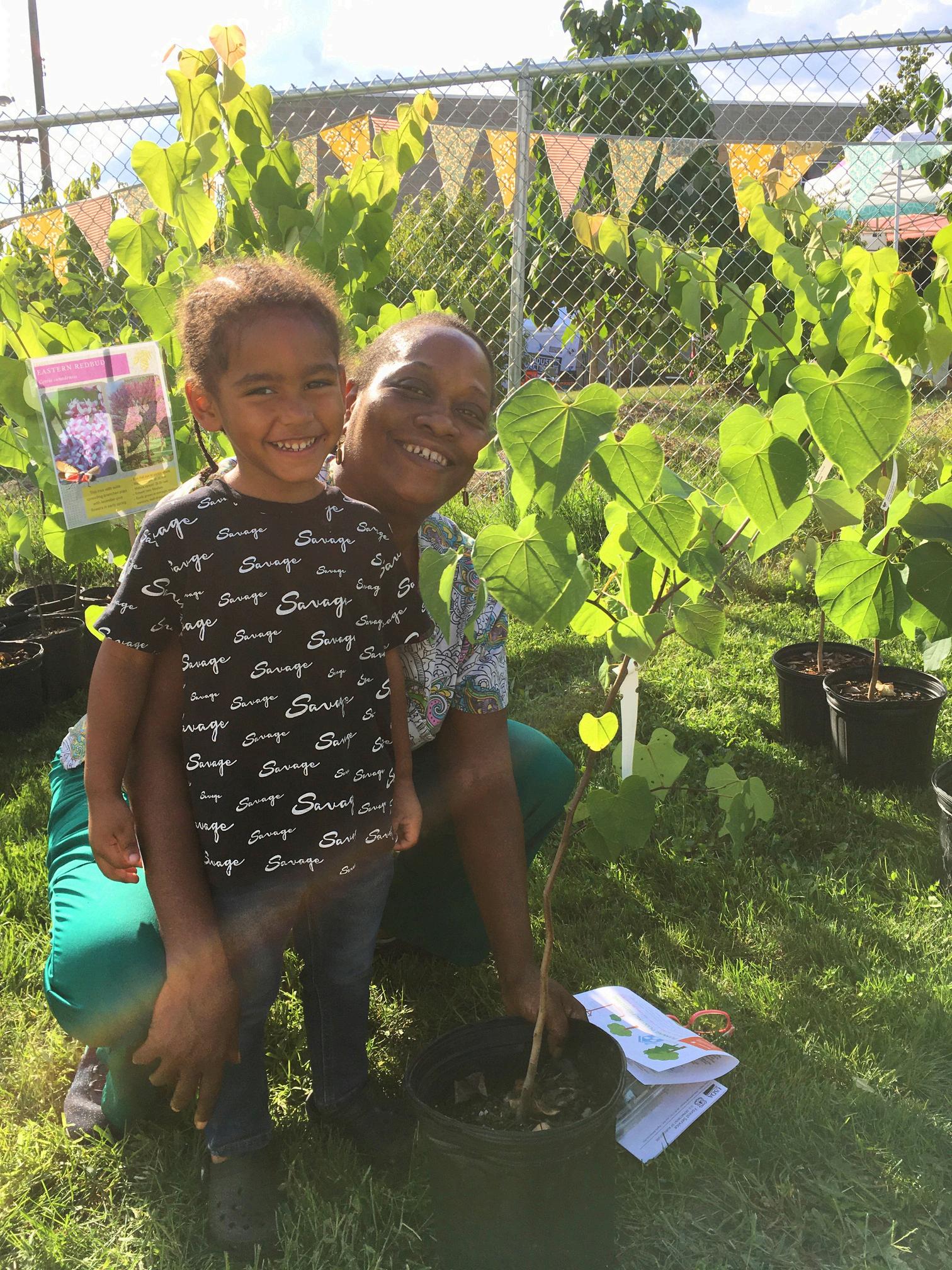
Homewood ranks in the bottom third of neighborhoods for parkland percentage with North at 0 94 percent, West at 0 34 percent, and South with only one city park covering one percent of the area. There is also limited space for greenways due to infrastructure like the East Busway and roads However, Vacant lots currently owned by the City’s taxing bodies can serve new purposes depending on ownership and community desires; for example, tree planting in Homewood South and repurposing abandoned lots for parks can impact the percentage of canopy accessible to residents. Residents also have access to nearby Larimer parks, which is an option for access to more green spaces Recent investments in neighborhood parks include Baxter Parklet and Homewood Gazebo Park Other spaces like Dallas Parklet, Frankstown, and Bennett Street Garden exist. However, some greenspaces, like New Street Tri Ura and Upland Park, lack investment Homewood hosts various gardens offering engagement and potentially addressing food insecurity, such as Ms Mary Savage’s Orchard, Sankofa Village Community Garden, Black Urban Gardeners and Farmers sites, Faison Gardens, and Oasis Farm and Fishery. Tree Pittsburgh planted trees with Oasis Farm and Fishery in 2023.
These greenspaces and organizations provide essential opportunities for the engagement of Homewood community members ReLeaf Homewood’s ultimate goal is to see an equitable increase of tree canopy throughout Homewood. Identifying the resources and active organizations is the first step to identifying how this goal and be achieved. Every ReLeaf community is unique, and understanding what we have provides the framework for the next steps of ReLeaf
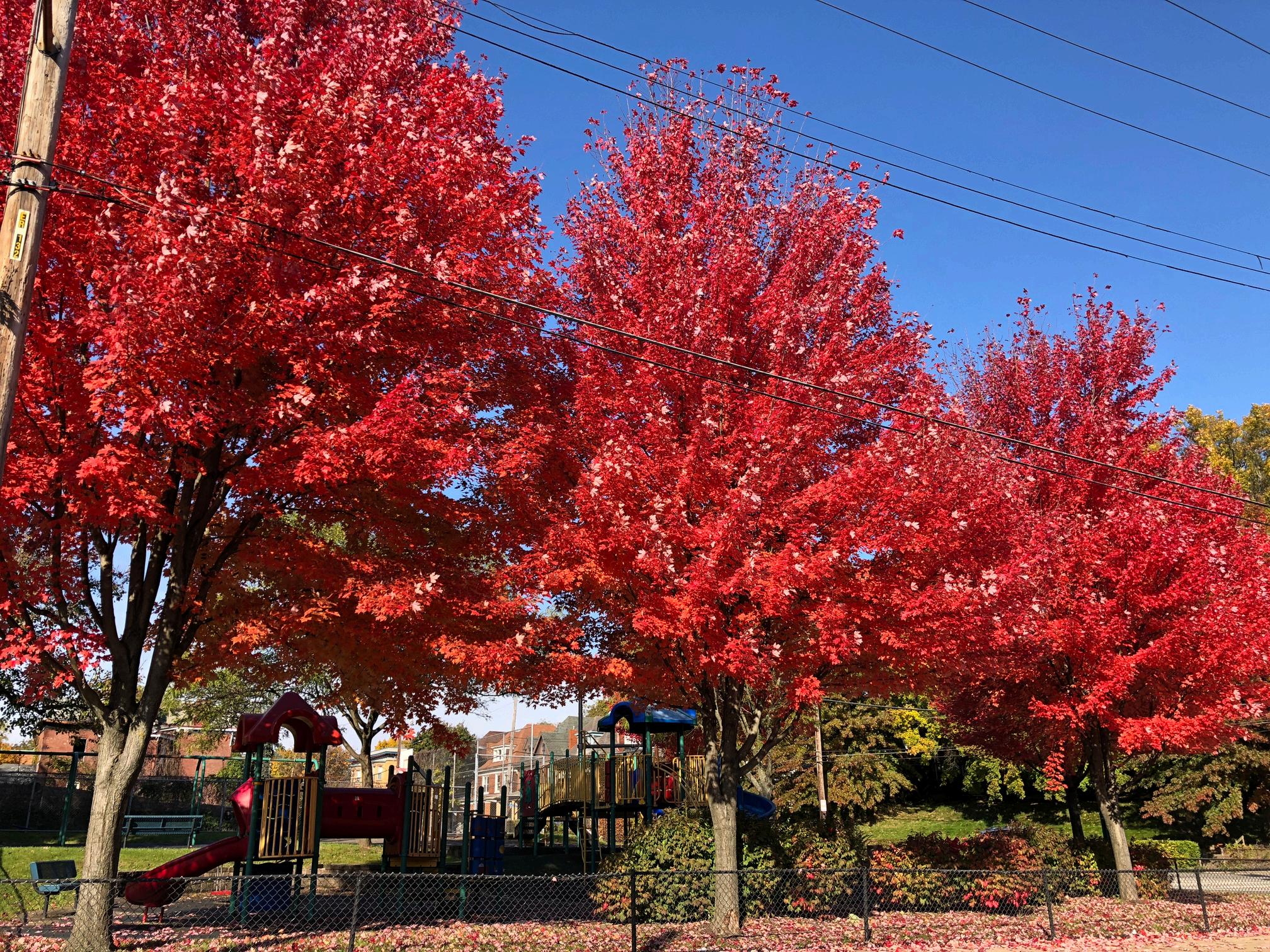
To understand the residents’ desires in Homewood, the planning team conducted a Community Survey. The survey questions help establish a baseline understanding of the neighborhood's needs to address its current tree canopy challenges and opportunities

We received 40 responses from renters, homeowners, seniors, youth, and adults 45 percent of survey respondents owned their homes compared to 52 5 percent who are renters Additionally, 62 5 percent of the survey respondents identified listed as female and 37.5 percent as male.
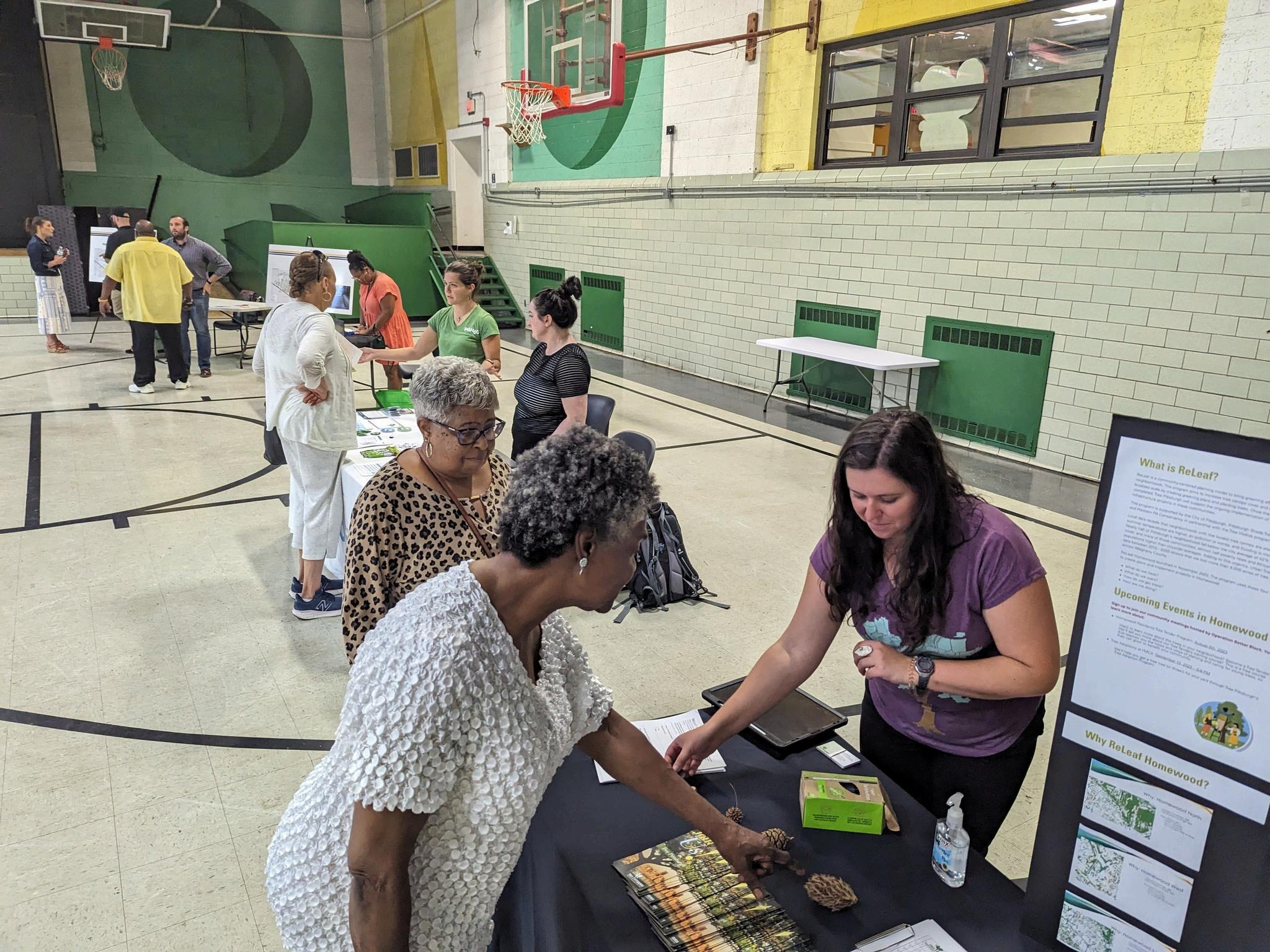
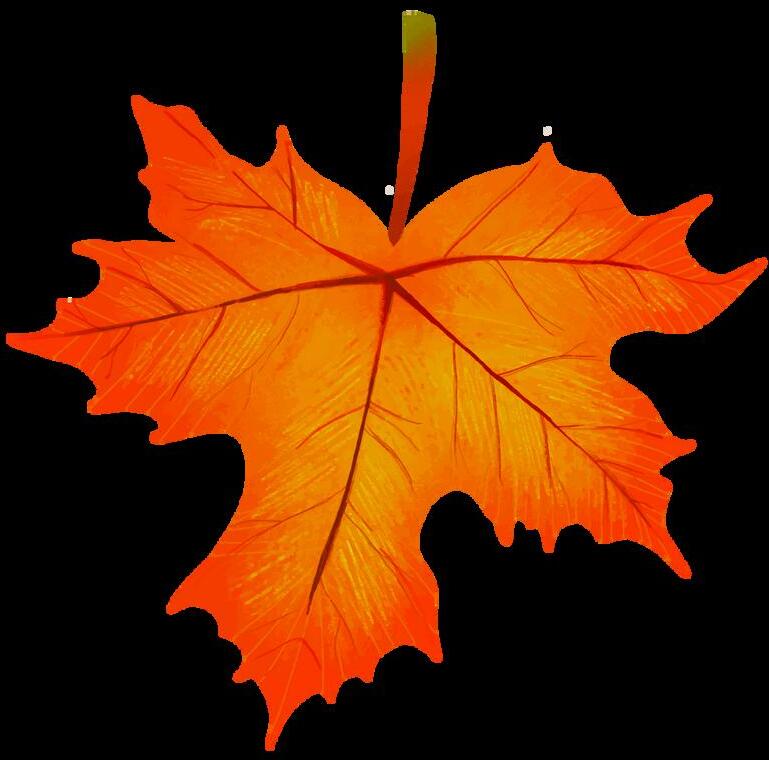

We asked how residents interact with the urban forest to further understand community needs for their urban forest 49.2 percent of survey respondents felt there weren’t enough trees in the neighborhood, while only 3 percent felt there were too many trees. This may be based on where residents live in the neighborhood. Parts of the neighborhood lay adjacent to vacant lots or land, with native and invasive tree species backed next to housing 31 7 percent of respondents (20 respondents) felt that many trees were dying in the neighborhood In addition, residents living in Homewood South may not experience the community forest like residents in Homewood North. Homewood South has a significantly smaller tree canopy compared to Homewood North
Between 2015 to 2020, Homewood’s tree cover increased from 30% to 31%. How do you feel about the NUMBER of trees in your neighborhood?
There are too many trees here. A lot of trees are dying here. There aren’t enough trees here. A lot of trees are being cut down here.
Regarding where residents see trees in their community, 14 9 percent shared that they have a forest, park, or cemetery nearby that they can walk to. Nearly half of the respondents (49.3 percent) have a private tree or can see one in their neighbor’s yard. An additional 26.9 percent have a street tree in front of their yard.
Where do you see trees in your neighborhood?
I have a street tree in front of my house (street side of sidewalk).
I have a private tree (in my yard).
My neighbors have trees in their yards.
I have a forest or park I can walk to nearby.
Other private-property trees near me.
Nowhere/none of the above.
Can you see at least three trees from your home?
Yes, three or more trees.
No, less than three trees.
Respondents also shared outdoor activities in which they have participated with the community forest 32 percent of respondents had sat under the shade of a tree, while 33 percent had actively engaged with trees by picking up leaves, taking care of trees, or picking fruit and nuts from the community forest. 22 percent of residents engaged in planting trees in the neighborhood, while some residents disliked the clean-up of leaves from trees around their properties Residents have a connection with the community forest and use it for a variety of activities
In the past year, have you had the opportunity to participate in any of the following activities in Homewood?
I have cared for a tree.
I have picked fruits, nuts, or flowers from a tree.
Residents answered questions about the various environmental, economic, and health benefits of trees Their responses were used to develop different implementation projects in the neighborhood and provide a baseline for future assessment of community awareness of these benefits and participation.
Survey respondents had varying levels of awareness of the environmental benefits trees provide They were questioned about their knowledge of whether trees reduce carbon dioxide, reduce landslides, and reduce stormwater runoff
Reduce Carbon Dioxide That Contributes to Global Warming
We also asked some questions to understand residents' opinions about the economic benefits trees provide Respondents are either not aware of or don’t agree with the responses for tree planting as a way to reduce utility bills and crime or increase home values. With about 45 percent of survey respondents being homeowners, this presents an opportunity to educate and distribute trees directly yo property owners in the community
Finally, respondents gave feedback on the many health benefits trees provide Most respondents were aware of trees’ work in filtering air pollutants that cause asthma and their ability to help address symptoms stemming from heart disease. They also know the trees’ ability to encourage walking and physical fitness. Regarding mental health effects like helping with relaxation and feeling calmer, 57 5 percent of respondents were aware of this potential for trees to support In general, respondents to the survey were aware of the health benefits trees provide More educational engagement and activities in nature with residents will continue this trend for future years in the neighborhood.
Help People Relax and Feel Calmer
Encourage Walking and Physical Fitness
For the type of trees they would like to see in their yards, 54 9 percent would either like a small flowering tree or a fruit-bearing tree, 17 percent would adopt a shrub, 12 percent would like a medium tree, and 14.6 percent would adopt a large tree. 1.2 percent of respondents would not adopt a tree. These results show an appetite for trees in the community, especially fruit trees
Tree Pittsburgh hosts Tree Adoptions for communities. What tree would you be most likely to adopt for your yard?
A shrub. A small, flowering tree.
tree that produces food.
medium tree.
large, canopy tree.
We also asked respondents to share the types of activities they would want to see or participate in with Tree Pittsburgh and other partners to support the community forest 46 percent of respondents would like to participate in tree care and tree educational activities, 20 percent would like to plant trees, and 17 percent would either become certified Tree Tenders or like to see more Tree Adoption events in the community.
What activities would you like to participate in?
Become a certified Tree Tender
Tree plantings
Attend a tree care day (watering, weeding, mulching)
Tree education activities
Tree Adoptions
Tree trimming and removal of leaves from gutters
None of the above
To increase the tree canopy and participation of residents in the neighborhood, Tree Pittsburgh staff assessed results from the community surveys and discussed these ideas with the steering committee members. Residents desire more green spaces in the neighborhood and increased youth participation and access to environmental programmi The following section presents a variety of priority projects for the next few years, including a budget and timeline to provide a way to reach the goal.
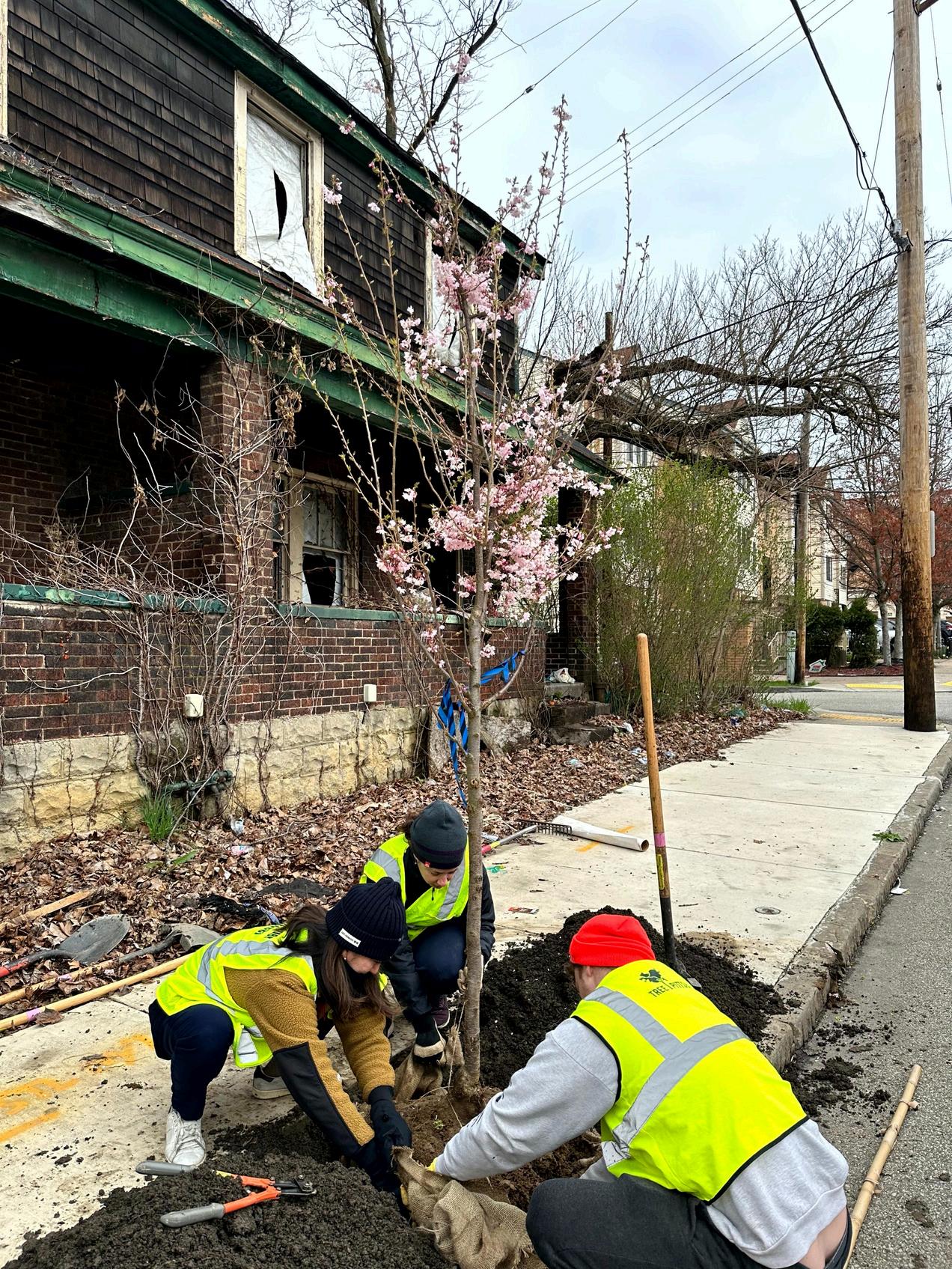

Trees will need to be planted for various uses to re-leaf Homewood The following are proposed projects for future implementation
Update street tree inventory for Homewood Plant street trees alongside the Department of Mobility and Infrastructure (DOMI)’s sidewalk improvement efforts and transportation corridor projects Conduct tree plantings with residents and relevant partners
Continue the Tree Adoption program in Homewood Strengthen partnerships with local orchards and gardens via the Giving Grove program at Tree Pittsburgh and other relevant partners
Work with residents and City taxing bodies to understand ways of using vacant lots for greening efforts
Develop a plan for Finance Street planting with Pittsburgh Regional Transit (PRT) and community residents


Planting new trees is important to restoring the lost tree canopy and ecosystem services trees provide However, preserving older and more established trees will be important in maintaining a healthy community forest in Homewood. This means caring for already existing trees in the community The following priorities rose to the top for Homewood residents during the planning process.
Remove and prune hazardous trees through the City of Pittsburgh’s Forestry Department and other relevant partners
Implement street tree care with volunteers and community residents
Host various educational events in the neighborhood, especially in public spaces in the community
Engage youth in schools and the neighborhood in tree care efforts, e g Operation Better Block’s Junior Green Corps
Establishing a healthy community forest in Homewood will include building a strong core of residents and supporters Even with major developmental pressures, the community has strong advocates who continue to raise their voices for a healthy community forest. The following are additional steps to take to increase buy-in from more residents in the neighborhood
Deepen youth engagement programming with Operation Better Block’s Junior Green Corps and other organizations supporting youth engagement in the community forest
Pilot low-income Homeowner Tree Care Fund to support homeowners with tree care
Conduct new educational programming models with partners like Homewood Children’s Village
Support community organizations and work with youth to develop tree care plans
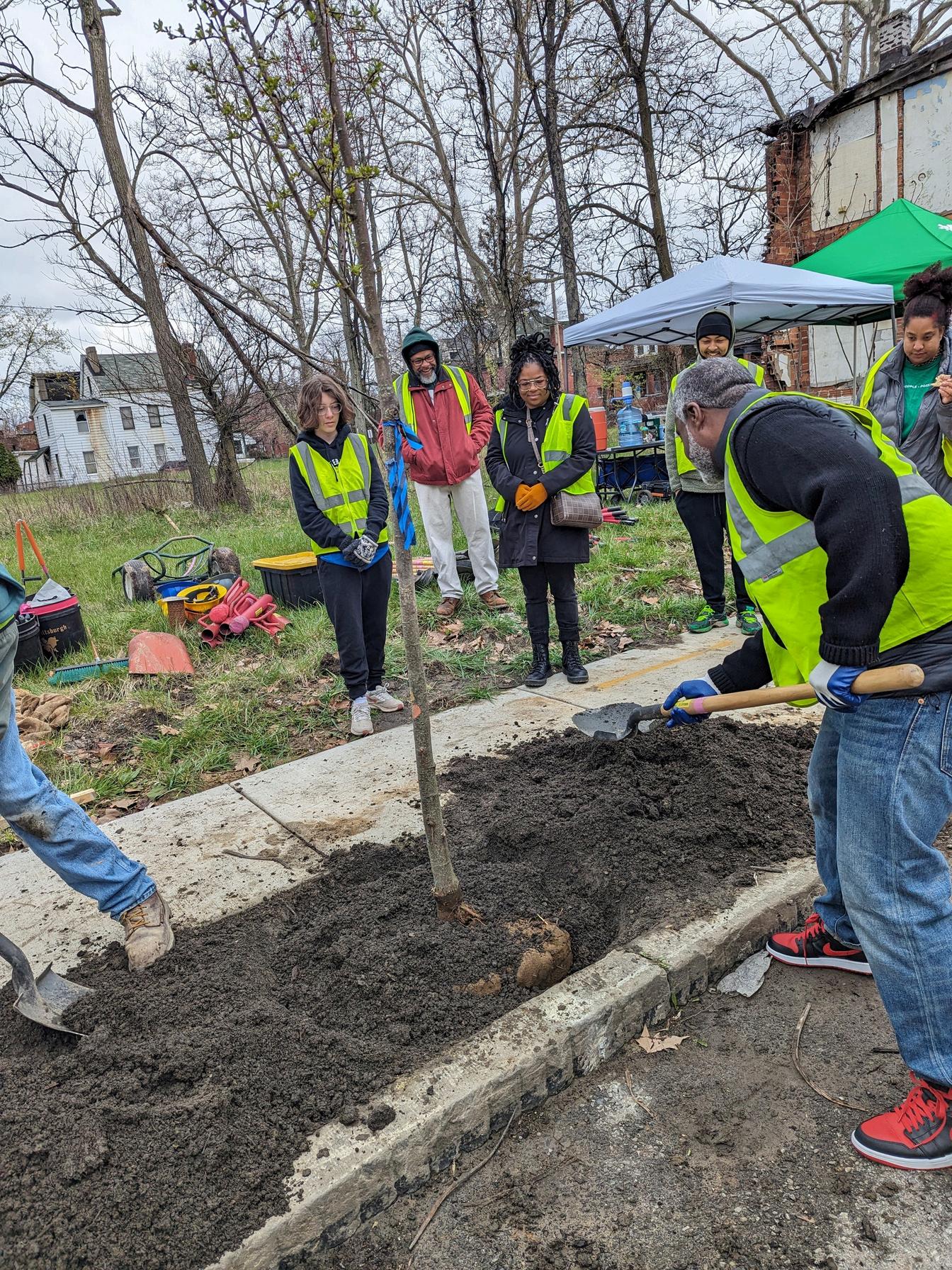
Tree Pittsburgh is excited to continue the work in Homewood thanks to special support from the Inflation Reduction Act Funding for investments in Justice 40 and Environmental Justice census tracks in Allegheny County. In addition to adding feedback and capacity to work by other partners in the neighborhood, we will match resources to improve environmental conditions for the residents
Updatestreettreeinventory
PlantstreettreesalongsidetheDepartmentofMobility andInfrastructure(DOMI)’ssidewalkimprovement effortsandtransportationcorridorprojects
Conducttreeplantingswithresidentsand relevantpartners
ContinuetheTreeAdoptionprograminHomewood
Strengthenpartnershipswithlocalorchardsand gardensviatheGivingGroveprogramatTree Pittsburghandotherrelevantpartners
WorkwithresidentsandCitytaxingbodiesto understandwaysofusingvacantlotsforgreening efforts
DevelopaplanforFinanceStreetplantingwith PittsburghRegionalTransit(PRT)andcommunity residents
City of Pittsburgh, Western PA Conservancy
City of Pittsburgh, Tree Pittsburgh, Western PA Conservancy (TreeVitalize), other partners as needed
City of Pittsburgh, Tree Pittsburgh, various additional implementation partners
Tree Pittsburgh with additional implementation partners
Tree Pittsburgh (Giving Grove) and partners in the community as funds become available
City of Pittsburgh, Tree Pittsburgh, URA, City Planning, City Forestry, Real Estate Office at the City of Pittsburgh, other implementation partners
Tree Pittsburgh, Operation Better Block, Pittsburgh Regional Transit
Removedeadtrees
Prunehazardoustrees
Implementtreecarewithvolunteersandcommunity residentsforstreettrees
Hostvariouseducationaleventsintheneighborhood, especiallyinpublicspacesinthecommunity
Engageyouthinschoolsandtheneighborhoodintree careefforts,e.g.OperationBetterBlock’sJuniorTree Corps
Engageyouthinthecommunityandneighboring schoolsintreecareandreforestationefforts
PilotLow-IncomeHomeownerTreeCareFundto supporthomeownerswithtreecare
Condcutneweducationalprogrammingmodelswith partnerslikeHomewoodChildren’sVillage
Supportcommunityorganizationsandworkwithyouth todeveloptreecareplans
Monitoring the continued growth of tree canopy and residents’ participation with the community trees, analyzing canopy outcomes, and revising goals are keystones to maintaining a dynamic management approach for the community trees.

Tree Pittsburgh will assess the success of Homewood’s ReLeaf program at the end of its two-year plan Plans outside of the two-year window will be led by the ReLeaf Homewood steering committee with help from Tree Pittsburgh as funding is available. Reassessment will occur after two years to determine if the organized efforts are successful At that point, a complete evaluation and additional recommendations will be made to continue the ReLeaf Homewood “How Are We Doing” section This evaluation will assess metrics that will outline success and shortcomings.
Tree Pittsburgh will include various metrics in an annual report, including but not limited to: number of trees planted, survival rates, overall tree canopy cover change, tree canopy cover changes by land type, number of Tree Tenders, number of trees pruned, number of trees mulched and weeded, assessment of community attitudes and participation in maintaining the community forest, and evaluation of annual tree benefits
An annual report will also be created to evaluate progress and inform the community about program successes.


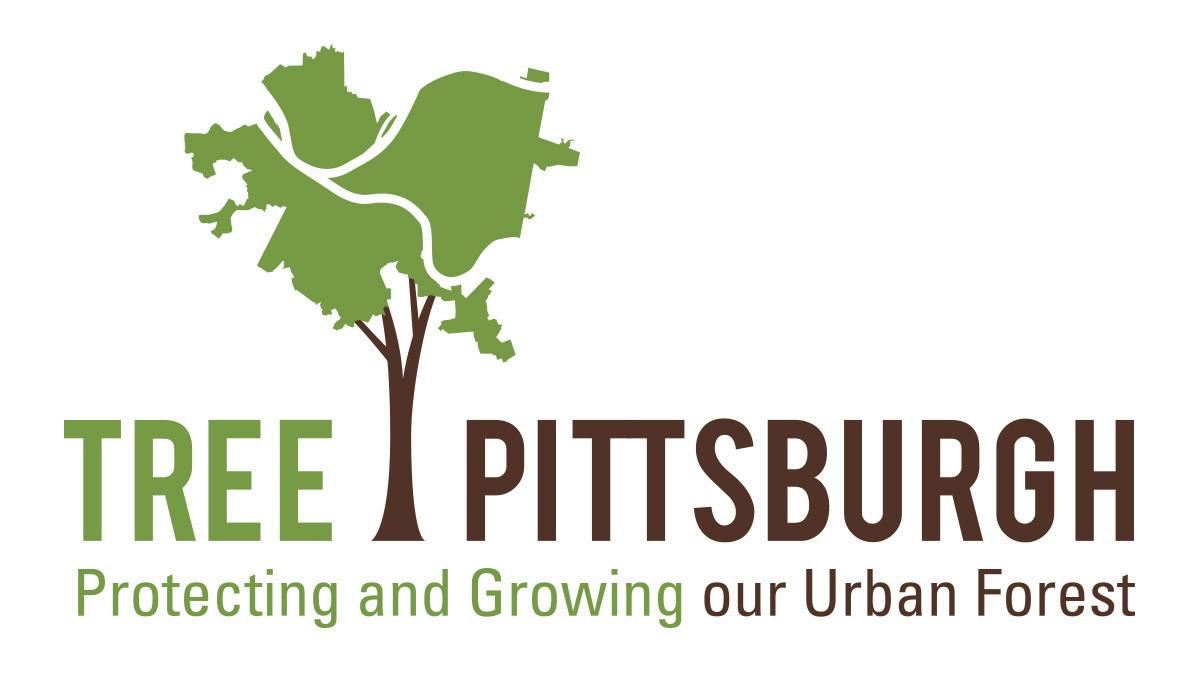
Tree Pittsburgh’s ReLeaf program is a stakeholder-driven process that brings urban forest planning to the neighborhood level We work with communities that want to chart a path toward a greener neighborhood Together, we’ll create a plan to grow the urban forest through tree planting, tree care, and education to help ensure long-term success








